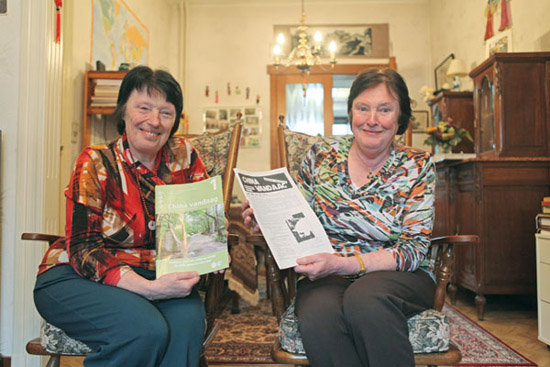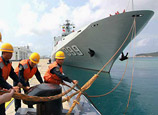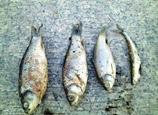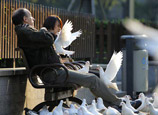
 |
| Lin (left) and An Tengrootenhuysen have many fans in China. (China Daily/Fu Jing) |
From the outside it looks like a typical Belgian house, but inside the building in Antwerp, lies an Aladdin's Cave of Chinese paintings, calligraphy, books and decorations.
Surprisingly the owners are not Chinese but Belgians with a "Chinese heart" who 30 years ago, in this house, published the first edition of the Flemish-language magazine China Vantaag (China Today).
Lin Tengrootenhuysen and her younger sister An developed an interest in China as kindergarten teachers when they began looking after the children of some local Chinese restaurant owners during weekends.
Despite the passing of time, memories of those times are still fresh in their minds. "These kids were in our classes, but their parents were working in Chinese restaurants and had to work during weekends, so the community came to us to ask if we were willing to look after them," Lin says.
Pictures of the first child they looked after, a girl, hang on the wall of the house.
"They still visit us every year, and bring their kids here," Lin says.
Through the children and their families the sisters' interest in Chinese culture grew, and to further their understanding of the country they began taking Mandarin lessons at the Belgium China Association.
The year 1979 remains imprinted on their memories: it is when they first set foot in China, as part of a Belgium China Association delegation, to see the hometown of the children they had been taking care of and grown to love.
The visit fascinated them, and fuelled their enthusiasm for China further. On returning to Belgium they were keen to learn more about the country and keep abreast of goings on there, but information proved hard to find. Flemish newspapers and magazines carried almost nothing about China, and so the sisters' hatched a plan to found the first Flemish-language magazine aimed at introducing Chinese culture to Belgium.
It was 1982 when they put their plan into action and began collecting and translating articles about China. The job was tough because of a lack of information.
"We couldn't find anything in the newspapers about China except negative news," An says."Western media did not mention Chinese people's local life or information."
Despite having no knowledge about the publishing business, in January 1983 the first issue of China Vantaag was printed in the sisters' home, which acted as the newsroom, design studio and print room. The sisters are now in their 60s and 70s but they continue to publish the magazine from the house and do all the work on it themselves.

















 Life aboard a fishing boat under bridge in city of Chongqing
Life aboard a fishing boat under bridge in city of Chongqing


![]()
